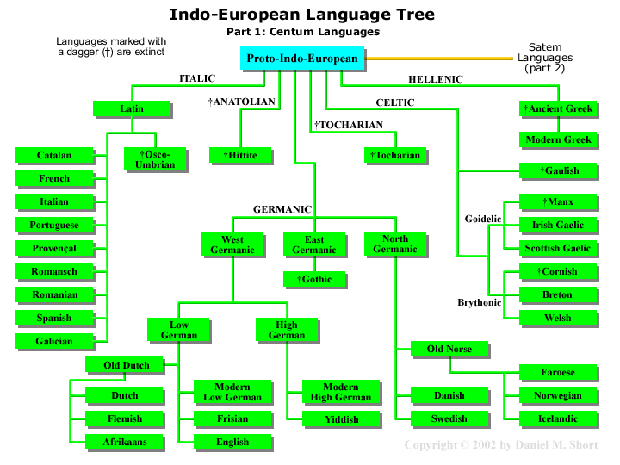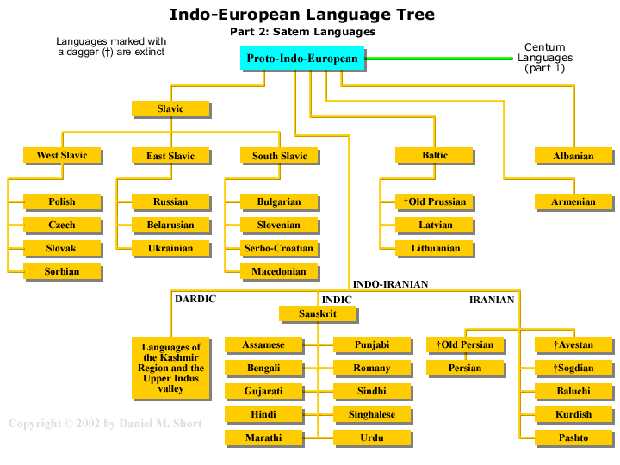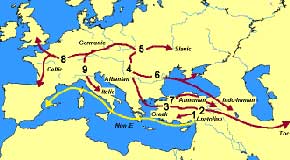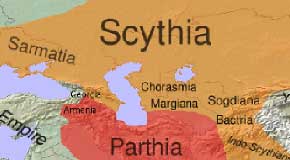The Indo-European Family of Languages
Most languages in Europe, the Middle-East, and India appear to descend from a common ancestral language known to scholars as "proto-Indo-European," as set forth by William Jones and his work with Sanskrit. This common ancestral language appears to be unrelated to other world languages spoken in China, Vietnam, Korea, Tibet, Africa, indigenous Australia and indigenous America, Polynesia, Finland, Hungary, the lands of classical Hebrew, and other regions. Discussion of non-Indo-European languages can be found elsewhere on this website.
Today, the Indo-European languages have spread across large portions of the globe. They include diverse tongues like English, Russian, French, Latin, and Hindi. While English is very different from Hindi, for instance, they both come ultimately from the same source: Indo-European.
 This chart shows the Centum branch of languages in color.
This chart shows the Centum branch of languages in color.The Indo-European languages fall into two general branches. At some time in the distant past, the original Indo-European speakers migrated westward and eastward from a location north of the Middle East. We can trace those migrations by looking at vocabulary in each language, and gradually seeing the sound changes that took place over time as the tribes drifted further apart. The Indo-European tribes that migrated westward tended to pronounce words with hard /k/ sounds--a velar stop. On the other hand, those that migrated eastward pronounced similar words with /s/ or /sh/ sounds--a fricative sound. Likewise, the westward travelers tended to have certain vowel sounds transform into /e/ sounds while the eastward travelers tended to switch to /a/ sounds over time, and the labio-velar stops in westward traveling tribes tended to turn into velar sounds. Philologists have named the two branches Centum and Satem. Centum is the ancient word for "one hundred" in Latin, a language in the western branch of Indo-European. Satem is the ancient word for "one hundred" in Avestan, a language in the eastern branch of Indo-European. The two words illustrate the major changes in a single word as the Indo-European tribes drifted in two different general directions.
 This chart shows the Satem branch of languages in color.
This chart shows the Satem branch of languages in color. Below, you will see three thumbnail images. These three images are parts of charts showing the two branches of Indo-European languages. On the left, the Centum appears in green. On the right, the Satem branch appears in yellow. The vertical chart in the middle shows both Centum and Satem branches at once. You can click on any of these three to enlarge them and reveal a more detailed interactive map. Black and white copies of the Centum chart and the Satem chart are also available if you wish to print out a copy.
The various charts of Indo-European languages and the maps showing the spread of each Indo-European language, were created by Daniel M. Short for his website at http://www.danshort.com/. These images are used with the author's permission, and they are copyrighted by Daniel Short as of 2002. These charts should not be reproduced or reused without Mr. Short's permission. You may contact him at danshort@gte.net for more information. These images are not public domain.




